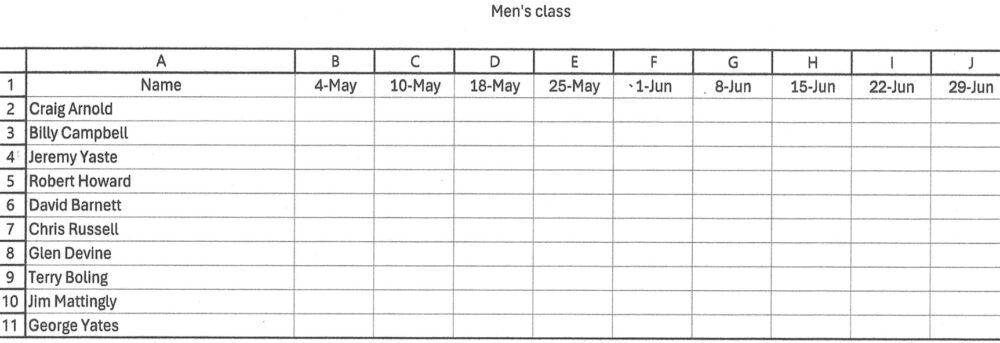When Jim Edwards came to serve as pastor of Community Church he had visions of growing a great church. He planned to visit 10 households each week, eventually leading the church in doing similar. Rev. Jim had plans of training and encouraging his congregation in serving the community, especially the apartment complex and the 200 and 400 home neighborhoods surrounding the church. This was a dream job for Jim. He and wife Janie felt blessed for being called to serve at Community Church.
Sitting at his desk in the church office six months after arriving at Community Church, Pastor Jim realizes he is teaching and preaching right on target with his plans. However, he has not been able to make it into more than 3 homes any given week. He ponders, “What happened? How come I cannot make time to visit in homes?” Jim thought he would have time visiting in homes about 2 nights each week and on Saturdays. What happened to his nights? Then it hit him.
Rev. Jim began recounting his evening schedule. Monday nights he meets with the Finance team and the Personnel committee. Meeting with the finance team one Monday evening streamlining the financial structure of the church and the following Monday meeting with the Personnel committee working to update and re-write the church’s job descriptions and policy manual. Every Monday with the Personnel or the Finance Committee.
Tuesday evenings for Pastor Jim are spent with a special team assigned to update the by-laws of the church which have not been updated since the church’s founding in 1985. Wednesday nights Rev. Jim is right in the middle of the high energy student ministry, doing what he enjoys, interacting with others, equipping them with the truths of scripture.
By the time Thursday evening rolls around, Jim is ready for a break. Those tedious, meetings working on updating policies, by-laws, and financial strategies, this is not what Jim had looked forward to when signing on to lead Community Church. It is not what he signed on for, but Rev. Jim is one pastor who understands the need for addressing the critical issues of the church to bring about healthy organizational structure, realizing a healthy organizational structure produces a vibrant organization.
You see, the reason Rev. Jim is helping to streamline the finance structure of the church is that one year before Jim arrived the former treasurer had embezzled $150,000. Streamlining the structure of finances in the church is critical for clarity and better oversight.
One of Rev. Jim’s mentors taught Jim that a church’s by-laws are the only legal document any church has to rely on and churches (and other organizations) should review their by-laws regularly and keep them updated. Community Church’s by-laws, being over 30 years old, are very outdated and somewhat antiquated by legal standards. Recently, another church on the other side of town was taken to court on a moral issue and lost the case because their by-laws, last updated in 1997, failed to protect the church from today’s immorality . Updating the by-laws is critical, though it may not seem urgent.
Jim is not fond of the administrative aspect of pastoring a church. Yet he knows all three of these committee workings undertaken since he arrived at Community Church are critical to the ministry and the future of the church though they might not seem urgent. Hence the reason the former pastor did not review and update these documents and sectors of the church.
Jim has led the church to undertake these critical issues without diminishing the quality of ministry he had envisioned when arriving at Community. Jim may not be getting out weeknights but he is visiting in homes on Saturday mornings. He first began with one other Deacon. Now there are three teams of Deacons and the Pastor visiting in an average of 10 homes every Saturday.
As a Transitional Pastor and Church Health Strategist, I spend much of my time assisting churches in organizational health issues and practices. One of the practices I’ve found in healthy organizations (churches) is leaders who understand the importance of slowing down to deal with issues that are critical but do not seem urgent. The ministry need not be put on hold while addressing these critical issues, but you may need to re-organize and prioritize schedules.
For more information on this and other organizational health issues for effective ministry contact George Yates and visit SonC.A.R.E. Ministries.
The adrenaline bias – O.H. takes time. Leaders must slow down and deal with issues that are critical but do not seem urgent. – Patrick Lenconi, The Advantage
